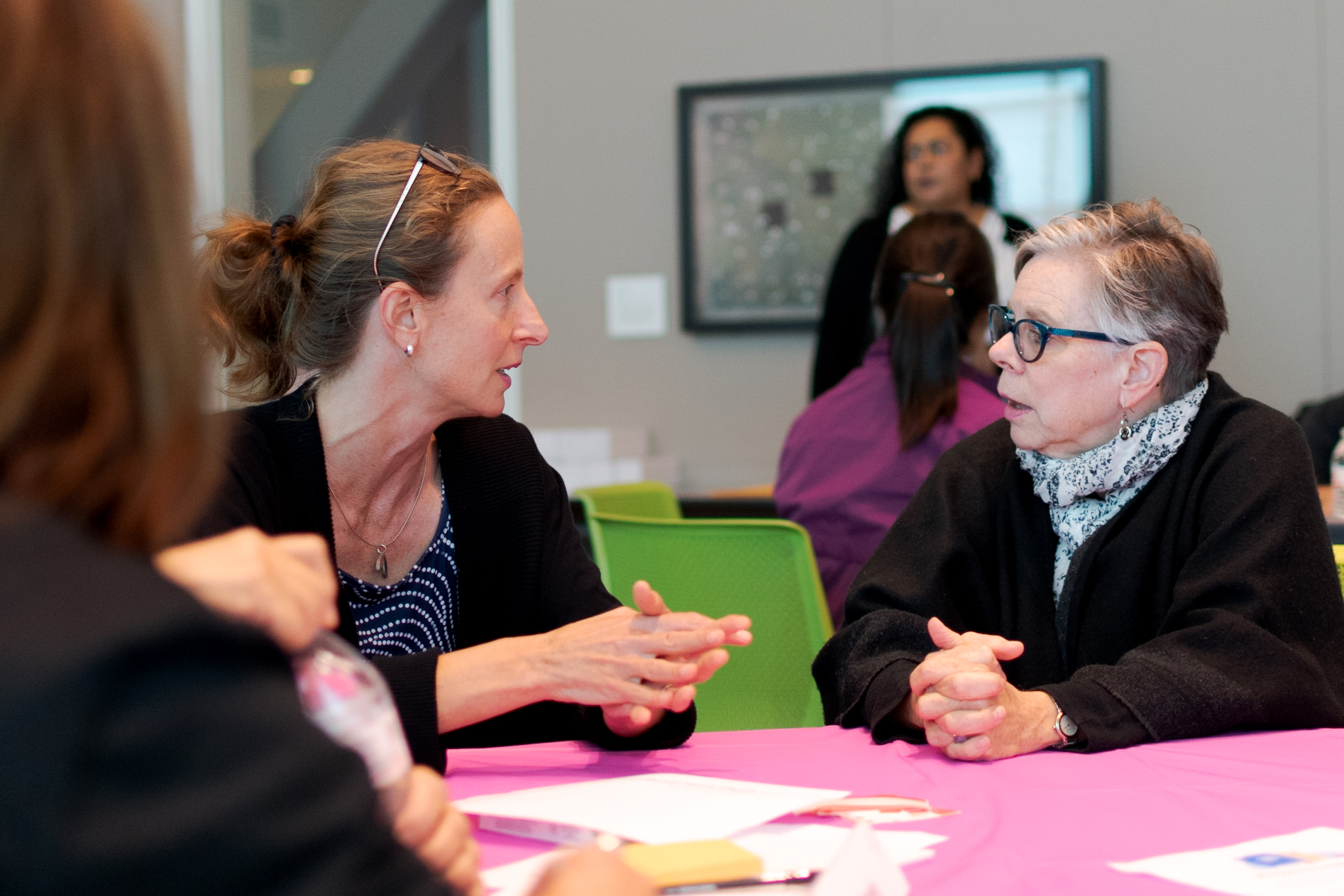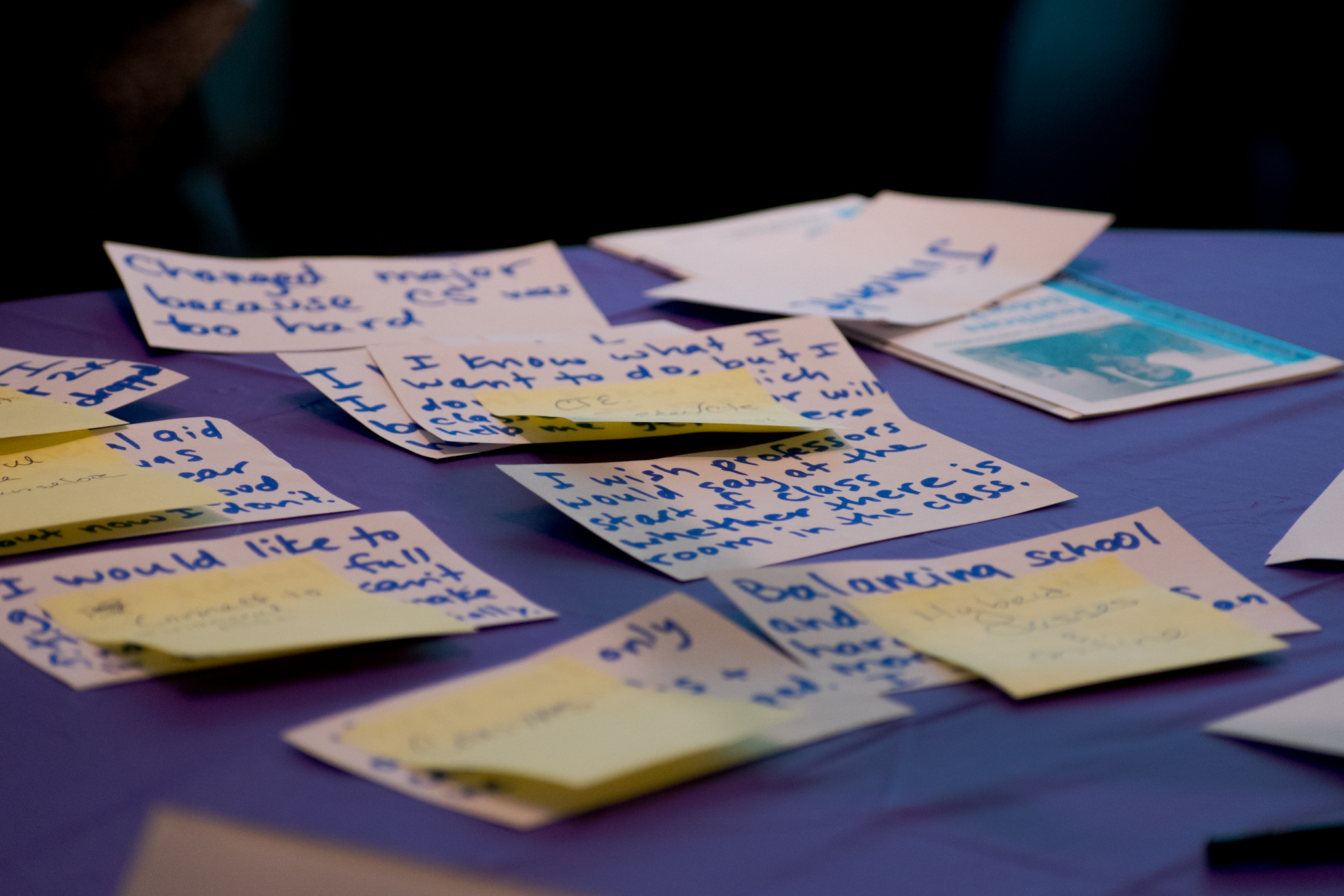Students engage college community at Guided Pathways session
By David Mamaril Horowitz
dhorowitz@theguardsman.com
A task force of City College administrators and faculty hosted an information-gathering session in the Multi-Use Building on Sept. 21 to discuss their ongoing effort to create a new Guided Pathways program with the college community.
Guided Pathways, which received $150 million in state funding last year as a part of AB-19, focuses on creating streamlined educational pathways to help students achieve credentials while meeting their diverse educational needs.
“I really appreciate the diversity of City College,” student Xianna Rodriguez said before the event. “That’s one of the big reasons that I came here.”
Preceded by 10 months of documented planning culminating in a work plan, the meeting marked the start of a formal inquiry to structure Guided Pathways and doubled as a collegiate town hall. It was also the task force’s first concerted effort to interact with the college community face-to-face and better understand the student body.
From class section cuts, to class flexibility, to housing insecurity, to lifelong learning and much more, the college community voiced concerns and pondered solutions for issues they faced.

Collegiate Concerns
Participating students shuffled toward different tables, where they voiced their needs with faculty, staff, administrators and other students. The latter listened and guided them to relevant resources while event organizers pitched in and kept a record of the discourse.
“It’s important to have people at the table who are thinking student-first,” staff member Jorge Murillo said.
One focal point of discussions was the disconnect between the college community and resources across the college campuses. At the table focused on communications, an attendee mentioned that a student orientation booklet lists the college’s resources, but others in the group were not aware it existed.
“Some of the solutions still put the onus on the students to know the resources or know the right person to ask,” English instructor Christina Yanuaria said. “Having gone to community college myself, when I showed up, I didn’t know what to ask.”
At least several students shared the desire to explore different fields through their coursework while still working toward a goal.
Student Kinson Wong said at Ohio State University, they offered a one quarter-credit business survey class. It gave students an introduction to business school while fulfilling different requirements.
City College has similar one-unit classes, such as Visual Media Design 100, that introduce students to a field and count toward certifications; however, not all academic departments have them.
Guided Pathways Communications Coordinator Rob Yung spoke with Wong about how meta-majors are another potential solution that gives students the chance to explore different fields. Such majors, like STEM, offer students the chance to enroll in different — but still related — courses that count toward multiple pathways.
“If a student changes their mind, they want it to be easy to change to another pathway rather than going back down and taking a bunch of new classes,” Yung said.
Faculty also stressed the importance of drafting the program with all-inclusive language that does not imply the gender binary.
“We’re doing something wrong if we’re excluding an entire group of students,” LGBT Studies instructor Breana Hansen said. “We should be reaching out not only to different student groups and faculty, but constantly reflecting on who’s not at the table and why.”
Student Rachel Amaya expressed concern about the college’s lack of computer access at night and over the weekends for students who do not have their own computer. She suggested having City College partner with a state college or university to access one of their computer labs.
Labor and Community Studies Department Chair Bill Shields spoke about how teachers struggle with having too many students in their classes.
“When I walk into my history class that has 50 people, as a department chair, I’m happy,” Shields said. “As a teacher, I’m appalled.”
Guided Pathways coordinators at each table led their groups through hypothetical scenarios for participants to problem-solve together. They concluded with a video featuring student voices that underscored the importance of communicating collegiate opportunities to students.

The Next Steps
Attendees were then given an opportunity to sign up for one or more of the five workgroups which oversee student experience, professional development, communications, mapping and evidence-based assessment.
“I really liked especially the first hour because they had a student at every table, and I always think we could do a better job including students,” transitional studies instructor Sharyn Zoll said. “I think we underestimate the gift that students could bring to everything on the campus in terms of participation.”
The next step in the process is for workgroups to begin meeting and start planning out the inquiry for the next year.
“I thought it went really well,” Guided Pathways Lead Coordinator Michelle Simotas said. “We started out last week with 20 people and today we ended up having 70 people show up, so I think that’s a success.”
Simotas plans to continue building engagement by creating a student worker position for the workgroups and reaching out to more classified staff.
